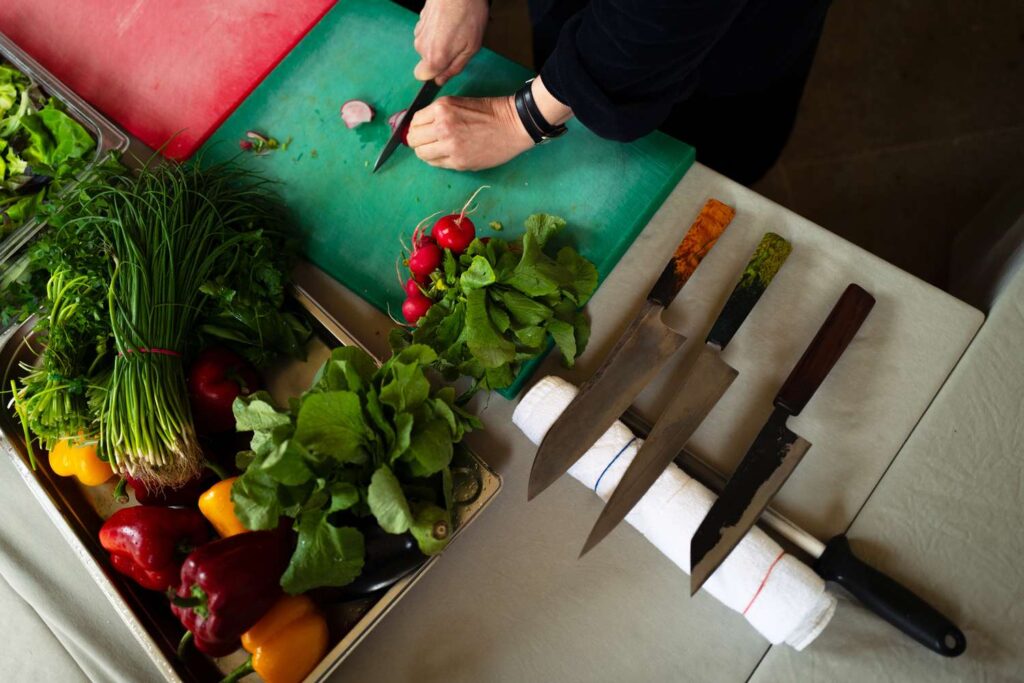970x125
Here’s an uncomfortable fact: the hospitality industry is responsible for around 10 percent of the world’s food waste, with hotel buffets being a major contributor. But younger travelers, in particular, are asking for change, says Annie Jones, owner of Telos Travel, a luxury agency.
970x125
“People are saying, ‘I don’t want a buffet, I don’t want a French restaurant if I’m not in France,’” she says. “They’re really looking for the local taste.”
Jones notes a shift in interest toward properties such as the new Hôtel du Couvent, in Nice, France, which gathers ingredients for meals from its on-site farm. It’s one of several properties in the Luxury Collection that are at the forefront of sustainable dining. “These big brands have the opportunity to make a big difference,” Jones says.
To that end, the Luxury Collection, which is part of Marriott International, brought together 13 of its leading chefs from around the world at MAD Academy, the sustainable-food initiative in Copenhagen founded by Noma chef René Redzepi. Over the course of three days, they attended seminars on reducing waste in innovative ways, learned how to rebuild supply chains to encourage local purchasing, and made plans for how to implement changes back at home.
“The academy made it easy to see how their specific skills, from understanding flavor to organizing staff to channeling creativity, are essential in shaping the future,” says Melina Shannon-DiPietro, executive director of MAD. “Partway through the second day, there was a conversation where it felt like the landscape shifted: everyone understood that for this to work, the Luxury Collection would need to look at their daily checklists and their standards. That’s how deep this would run.”
The first-of-its-kind gathering has already sparked innovation. Take chef Joris Larigaldie, who leads culinary operations at Costa Navarino, the resort destination in Greece that’s home to the Romanos, among other properties. After attending MAD, he went back to the hotel with the idea to turn spent peels from squeezing orange juice into “a delicious fruit gelée for a welcome snack,” Shannon-DiPietro explains.
The Gritti Palace, in Venice, reimagined its cooking classes, which now include a guided visit to seafood and produce stands at the Rialto Market. The hotel has also planted 6,000 artichokes on nearby islands, with the aim of using the resulting bounty on the property. In Athens, Hotel Grande Bretagne now sources its figs from a family farm in nearby Evia.
Jan Horák, the chef at Augustine Restaurant at the Prague hotel Augustine, admits that he was initially skeptical of the brand-wide push for more sustainable practices. But after attending MAD, he’s all in: “A huge thing I took home was being able to define what ‘local’ means for me,” Horák explains. “It doesn’t have anything to do with whether you’re German, Czech, French, or Italian. You just have to look around you to see what’s growing.”
His commitment was on full view this spring when I sat down for a dinner he had prepared—and was greeted with warm sourdough and butter topped with an electrifying twist on Marmite made from bread left over from the breakfast buffet. Horák had similarly repurposed cast-off items to deliver a vegetarian course of cavatelli pasta. The meal culminated with a dish of fallow deer and parsnips, which had been baked in a crust of leftover coffee grounds. Unbelievably, it tasted like a true luxury.
A version of this story appeared in the September 2025 issue of Travel + Leisure, under the headline “Waste Not.”
970x125

